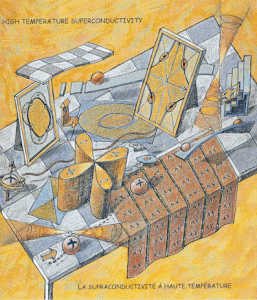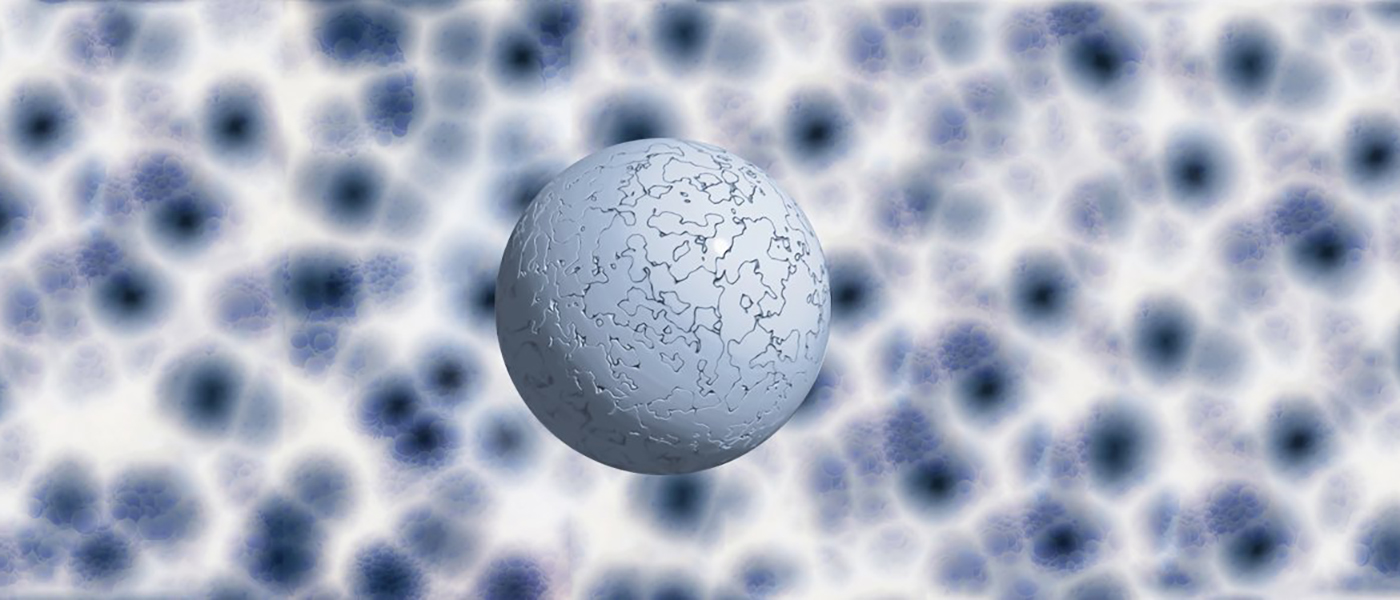Quantum Condensed Matter Theory

Quantum condensed matter theory attempts to describe and sometimes to predict the behavior of systems of relatively large numbers of particles (as many as 1024 for bulk systems or as few as 1010 for two-dimensional layers or even fewer for carbon nanotubes) at low energies, typically far less than 0.1 eV. The variety of systems that are treated is extremely rich, including metals and superconductors, ionic and magnetic systems, semiconductors, glasses and superfluids. The basic tools of the condensed matter theorist are quantum mechanics and statistical mechanics as well as many-body theory, path integrals, topology, group theory, density functional theory, computational physics and so forth. Quantum condensed matter theory has evolved very rapidly in recent years. Before the late 1960’s, condensed matter was basically a semi-classical subject because of the surprising fact that electrons in metals and semiconductors behave very much like non-interacting fermions. The justification for nearly-free-electron-like behavior was provided by Landau’s Fermi liquid theory which showed that, in many cases, interactions simply lead to renormalized band parameters. More recently however, both experimental and theoretical interest has shifted to systems in which interaction effects are overwhelming. Such systems include antiferromagnetic insulators that, according to band theory, should be metals. They include systems with fluctuating valence states and heavy fermion systems in which electrons move as if they had the mass of a proton. Phenomena such as strong and weak localization are also not describable in terms of semi-classical theories. The integral and fractional quantum Hall effects are examples of systems in which disorder and electron-electron interactions are inextricably interlinked, and the high temperature superconductors, both cuprates and pnictides, provide challenges which are likely to remain with us for many years.
From theoretical studies of the quantum Hall effect and high temperature superconductivity a new paradigm of order, called topological order, emerged. Topological order is not characterized by broken symmetry or a local order parameter, as in Landau-Ginsberg-Wilson theory, but the ordered state has distinct properties, such as a ground state degeneracy which depends on the topology, special edge states which are topologically protected and which can support dissipationless transport, and, in some cases, emergent particles with fractional or non-Abelian statistics. Topological order is now a very large and active area of research and encompasses order in quantum Hall systems, proposed spin liquid states, topological insulators, and chiral superconductors.
For at least the past five decades there have continued to be close connections between the problems studied by condensed matter theorists and those studied by particle theorists. For example, the concepts of spontaneously broken symmetries and Goldstone’s theorem arose first quite naturally in condensed matter theory. The renormalization group, created by particle theorists, lay dormant for many years until it was resurrected by another particle theorist, Ken Wilson, to solve the problem of the liquid-gas transition (as well as that of ferromagnetism, the Kondo problem and a host of other problems in condensed matter physics). Subsequently, after these methods were fully developed in the context of condensed matter theory, they were applied to other problems, such as lattice gauge theories and confinement. More recently, close connections between condensed matter problems and string theory have emerged. The AdS/CFT correspondence, discovered by string theorists, connects a string theory and gravity to a quantum field theory without gravity in one lower dimension. This correspondence has been applied to quantum condensed matter systems, revealing new insights into quantum phase transitions (transitions at zero temperature) and strongly correlated electron states.
The reason why quantum condensed matter theory is so important for other areas of theoretical physics is that it has an extremely rich structure as does, for example, field theory, but it is free of divergences in both the ultraviolet (because the size of an atom is not zero) and in the infrared (because the size of the sample is not infinite). Also condensed matter systems are relatively easy to visualize, and hence frequently provide paradigms of subtle concepts. For example, superconductivity provides the classic illustration of the Higgs mechanism in particle physics, and more recently, the concept of fractional statistics, which interpolate between Bose and Fermi statistics, has been realized in the fractional quantum Hall effect. Currently, there are also strong connections between quantum condensed matter and atomic physics, as physicists try to replicate states observed or predicted to exist in materials, such as Mott insulators, chiral superconductors and spin liquids, with lasers and cold Bose or Fermi gases.
The Quantum Condensed Matter Theory Group works closely with our very active experimental groups in the areas of high temperature superconductivity, low-dimensional systems, and neutron scattering. As well, there is a strong interaction with Perimeter Institute in Waterloo, about 70 km away from McMaster. This group also makes extensive use of the state-of-the-art computer facilities associated with SHARCNET.
Quantum Condensed Matter Experiment
The largest area of contemporary physics is experimental condensed matter physics. It is a field of physics where a graduate degree opens many different avenues. As well as leading to fundamental research at universities and research institutions, experimental condensed matter physics has important applications in the semiconductor and communications industry; in materials research, for products requiring desirable mechanical, electronic, magnetic, or other properties; and in the petroleum and chemical industry where there is interest in the reactivity of the surfaces of condensed matter.
The experimental condensed matter physics group at McMaster has a reputation as an active group involved in high quality, current research. We were delighted when Bertram Brockhouse, an emeritus professor in our group, was awarded the 1994 Nobel Prize for his pioneering work in neutron scattering. Physicists here work on an assortment of problems that are at the forefront of modern physics, either because they represent recent discoveries (e.g. conduction in nanowires, high temperature superconductors), or because they are classic, fundamental problems where progress can lead to understanding in a wide range of related areas (e.g. magnetic phases of matter). Further examples of current research in the group are spin glasses, frustrated and low-dimensional spin systems, model membranes, materials exhibiting colossal magnetoresistance, magnetism of ultrathin films and layered structures, helical and unusual magnetic phases, and ‘heavy fermion’ metals and superconductors.
This diverse list of topics does not, perhaps, reflect the cohesiveness and cooperation within the group. Graduate students will find that research in experimental condensed matter physics falls into three broad areas. The first is the study of the structures into which matter condenses. This includes crystalline structure, magnetic arrangement, and the phase transitions that occur between these structures. Given the structure, it is important to determine the nature of the ground states and excitations of these systems. It is primarily the electronic and vibrational (phonon) states that are of interest, although, in some materials, more exotic states are possible. Finally, the material and transport properties are studied with the aim of understanding how they derive from these states. Experimental and theoretical physicists work together closely to analyse the results, so that a link between properties and structure can be established.
Research in all three of these areas is represented at McMaster, resulting in a well-rounded experimental group. The individual faculty members focus on different aspects of a problem to form a community of research directed toward its solution. One example is the high temperature superconductors. These compounds are grown at McMaster, and then probed with X-rays, neutrons, electrons, magnetic and electric fields, muons, and infrared light to learn their structure, phase transitions, allowed excitations, magnetic and conductive properties; all with the ultimate aim of unravelling their unique mechanism of becoming superconducting.
Condensed matter physicists at McMaster have an impressive array of facilities available to carry out these experiments. In addition to their own laboratories, they participate in McMaster’s Brockhouse Institute for Materials Research (BIMR), where, along with chemists and engineers, they have access to excellent crystal growing, x-ray diffraction and electron microscopy facilities. Individual faculty members also have strong links with neutron, synchrotron radiation and muon beam facilities in Canada and around the world.
Please come and visit our laboratories for an informal tour. It will become clear that McMaster provides outstanding opportunities for graduate studies in experimental condensed matter physics.

